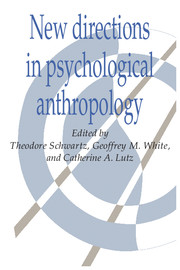Book contents
- Frontmatter
- Contents
- List of contributors
- Introduction
- I Cognition and social selves
- 1 Ethnopsychology
- 2 Cognitive anthropology
- 3 Schemes for schemata
- 4 The woman who climbed up the house: some limitations of schema theory
- II Learning to be human
- III The body's person
- IV Psychiatry and its contexts
- V Psychoanalytic approaches
- VI Disciplinary perspectives
- Index
3 - Schemes for schemata
Published online by Cambridge University Press: 05 June 2012
- Frontmatter
- Contents
- List of contributors
- Introduction
- I Cognition and social selves
- 1 Ethnopsychology
- 2 Cognitive anthropology
- 3 Schemes for schemata
- 4 The woman who climbed up the house: some limitations of schema theory
- II Learning to be human
- III The body's person
- IV Psychiatry and its contexts
- V Psychoanalytic approaches
- VI Disciplinary perspectives
- Index
Summary
Anthropologists have contributed to the study of mind throughout this century. Yet as the discipline has developed, approaches to the study of mind have diversified and communication among scholars with disparate approaches has become increasingly difficult. It is useful at this point in our history to reinstate the more inclusive vision of an earlier time and reopen lines of communication. Ultimately we all focus on some central questions. What are the formal and substantive properties of mind? What metaphysical assumptions must we make to account for particular hypothesized states of mind? To what extent are we dealing with a modular system?
With these questions in view cognitive anthropologists focus on knowledge representation and inference. The key term is schema. It replaces the blank slate and the black box, accounting for order, inference, and directive force. Yet the concept of schema has introduced at least as many problems as it has helped resolve. Schema: what is it? D'Andrade, building on Fillmore's (1975) research, argues that a schema is an organization of knowledge which constitutes a simplified world used to reason with. To elaborate just a little, schemata are culturally derived, knowledge-generated structures which facilitate comprehension and inferencing (Hutchins 1980; Nuckolls 1986). What constitutes a well-formed schema either formally or substantively? At this point we can't answer this question. The classic cognitive perspective in anthropology thought it could. Knowledge structures early in the history of cognitive anthropology were thought to consist of paradigms and taxonomies which in turn consisted of conceptual nodes defined by etic features in emic combinations.
- Type
- Chapter
- Information
- New Directions in Psychological Anthropology , pp. 59 - 67Publisher: Cambridge University PressPrint publication year: 1993
- 1
- Cited by



